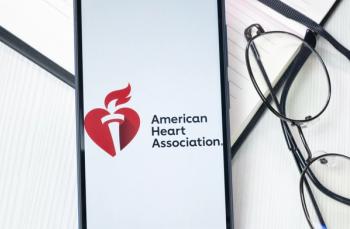
Significant OSA prevalence in pediatric patients with pulmonary hypertension
Obstructive sleep apnea has previously been associated with pulmonary hypertension in literature, with investigators citing a “complex and bidirectional relationship” between the 2 conditions.
A recent investigation into obstructive sleep apnea (OSA) in pediatric patients with pulmonary hypertension (PH) found that a majority of patients were affected by the sleep disorder, prompting investigators to suggest routine screening for OSA in this population.
The new data was presented this weekend at
Obstructive sleep apnea has previously been associated with pulmonary hypertension in literature, with investigators citing a “complex and bidirectional relationship” between the 2 conditions.
Though previous research has indicated a relationship between OSA and PH, little is known of the risk factors for the sleep disorder in younger populations. A better understanding of these risk factored could result in earlier and more meaningful treatment.
As such, and investigative team led by Daniel Ignatiuk, MD, of the Cincinnati Children’s Hospital, conducted an analysis of OSA risk factors documented in a 10-year cohort of pediatric patients with PH at the Cincinnati Children’s Hospital.
The team conducted a retrospective chart of patients 0-21 years with a documented diagnosis of PH who underwent diagnostic polysomnogram (PSG) between January 2010 and August 2020.
The first polysomnogram was analyzed in patients with multiple studies.
Exclusion criteria were PSG with sleep time less than four hours, tracheostomy tube, positive pressure ventilation, oxygen titration with less than 2 hours of diagnostic sleep time, and PSG more than 90 days before PH diagnosis or more than 90 days after PH resolution.
Meanwhile, PH was classified according to 6th World Symposium on PH criteria.
Only 2 patients with PH were excluded due to small group size.
Incidence of sleep disorders and OSA risk factors based on documented diagnoses and PH classification were the outcome variables.
A total of 403 patients were identified, with the final cohort including 89 patients with a median age of 3.6 years.
Classification of PH included group 1 (n=25, 28.1%), group 3 (n=31, 34.8%), and group 1/3 for patients meeting both group 1 and 3 criteria (n=33, 37.1%).
Diagnosed sleep disorders included OSA (n=79, 88.8%), central sleep apnea (n=11, 12.4%), hypoventilation (n=6, 6.7%), non-apneic hypoxemia (n=28, 31.5%), and periodic limb movement disorder (n=5, 5.6%).
Investigations observed that OSA risk was increased with a diagnosis of trisomy 21 (RR 1.24, 95% CI 1.09-1.42) (P<0.05).
Notably, OSA risk was decreased with group compared to group 1/3 PH (RR 0.84, 95% CI 0.71-0.99) (P<0.05) or group 3 PH (RR 0.81, 95% CI 0.68-0.96) (P<0.05), and no difference in OSA risk between group 1 and group 3 PH was seen.
Overall, OSA was diagnosed in a majority of pediatric patients in the study, most notably in patients with trisomy 21 or PS classification meeting both group 1 and 3 criteria.
“Our research supports routine screening for OSA in this population, and especially among patients with trisomy 21 or PH classification meeting both group 1 and 3 criteria,” the team wrote. “Further studies are needed to examine the impact of intervention on clinical outcomes.”
Originally published on our sister brand,
Newsletter
Access practical, evidence-based guidance to support better care for our youngest patients. Join our email list for the latest clinical updates.









